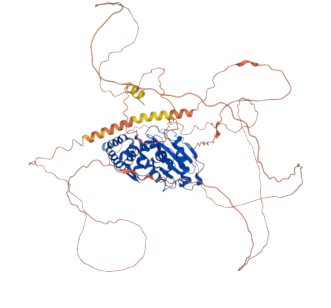Norway Spruce Trees Develop Complex Defense Mechanisms Against Pests

In a significant study published on June 24, 2025, researchers from the Max Planck Institute for Chemical Ecology have revealed that Norway spruce trees (Picea abies) produce a complex mixture of chemical substances in their resin to fend off insect pests and fungal infections. This research comes against the backdrop of alarming ecological changes in the Thuringian Forest and Harz Mountains of Germany, where dead spruce trees serve as stark reminders of the devastating effects of climate change.
The study highlights the increasing threats posed by the European spruce bark beetle (Ips typographus), a small insect responsible for extensive damage to spruce populations, exacerbated by rising temperatures and prolonged drought conditions. According to the 2024 Forest Condition Report from the Free State of Thuringia, bark beetles accounted for 88% of the total damaged wood, affecting an estimated 28 million cubic meters of spruce.
Dineshkumar Kandasamy, one of the lead authors of the study and currently conducting research at Lund University in Sweden, explained, "We aimed to investigate the defensive capabilities of spruce trees by testing twelve natural defense substances—monoterpenes, which are the primary components of spruce resin—against their most dangerous pests."
The research team found that individual monoterpenes were not universally effective against both bark beetles and the fungi that accompany them. Specifically, monoterpenes that repelled bark beetles had little impact on fungal growth and vice versa. This finding challenges previous assumptions about plant chemical defenses, which suggested that individual compounds could effectively protect against multiple threats.
Interestingly, the study indicated that mixtures of these monoterpenes were significantly more effective in deterring bark beetles and two out of three tested fungi than any single compound. Jonathan Gershenzon, head of the Department of Biochemistry at the Max Planck Institute, remarked, "This study provides one of the most conclusive explanations to date for the prevalence of chemical mixtures in nature, suggesting that such combinations may be the most effective means of defense for plants under simultaneous attack from various pests and pathogens."
The implications of this research extend beyond ecological understanding. The findings suggest potential avenues for developing natural pesticides, where mixtures of monoterpenes could be applied to tree bark to provide enhanced protection against pests. Kandasamy noted, "As climate change continues to place stress on plant defenses, understanding these mechanisms is crucial for predicting how ecosystems will adapt and for crafting strategies to protect them."
Despite the promising nature of this research, the team emphasizes the need for further studies to explore why certain mixtures function more effectively than individuals and to identify the specific targets of these plant toxins within pest organisms. As climate change poses further challenges to forest ecosystems, the need for effective plant defense mechanisms becomes increasingly critical, underscoring the importance of ongoing research in this area.
This study not only contributes to our understanding of plant defense strategies but also positions itself at the intersection of ecology and agricultural innovation, with the potential to inform more sustainable practices in forestry and pest management. The ongoing research and findings could pave the way for new approaches to maintaining healthy forest ecosystems in the face of climate change and pest pressures.
Advertisement
Tags
Advertisement





